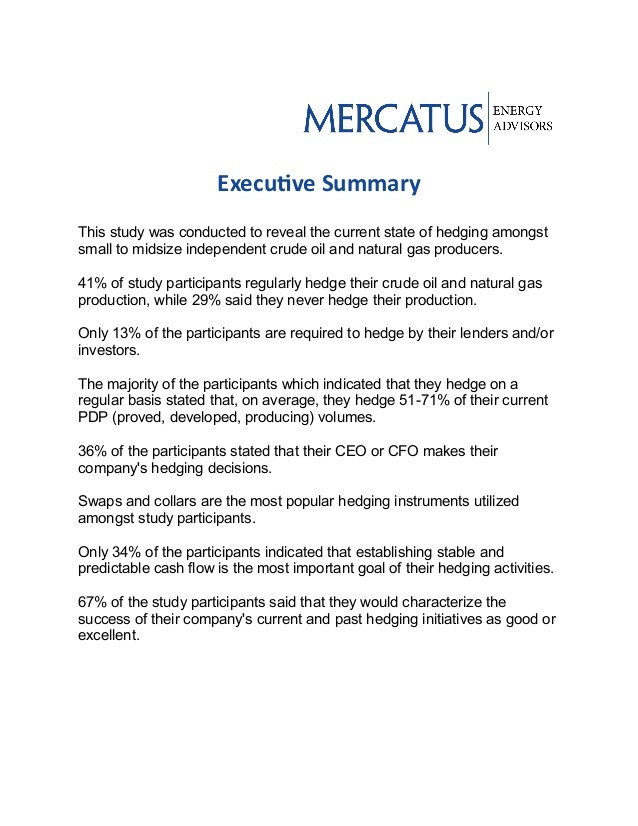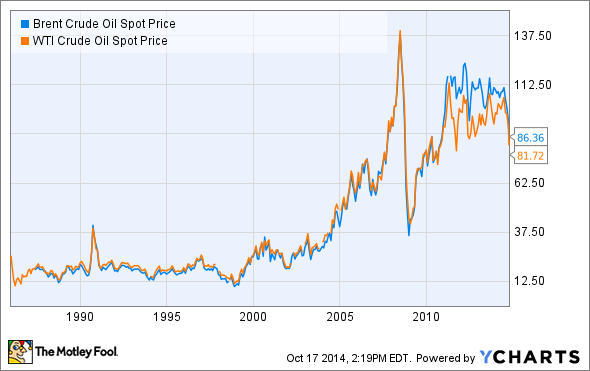The Fundamentals of Oil Gas Hedging
Post on: 11 Май, 2015 No Comment

The Fundamentals of Oil & Gas Hedging — Swaps
This post is the second in a series exploring common strategies which can be used by oil and gas producers to hedge their exposure to crude oil, natural gas and NGL prices. You can access the first post via the following link: The Fundamentals of Oil & Gas Hedging — Futures. In subsequent posts we’ll explore how oil and gas producers can hedge with options and more complex strategies.
A swap is an agreement whereby a floating (or market) price is exchanged for a fixed price or a fixed price is exchanged for a floating price, over a specified period(s) of time. The instrument is referred to as a swap because the transaction involves buyers and sellers “swapping” cash flows with one another.
Swaps are arguably the most popular hedging instrument used by oil and gas producers to hedge their exposure to volatile oil and gas prices as hedging with swaps allows them to lock in or fix the price they receive for their oil and gas production. In addition to companies seeking to hedge their exposure to energy commodity prices, swaps are also utilized by companies seeking to hedge their exposure to agriculture commodities, metals, foreign exchange rates and interest rates, among others.
As an example of how an oil and gas producer can utilize a swap to hedge its crude oil production, let’s assume that you’re an oil producer who needs to hedge your July 2015 crude oil production to ensure that your July revenue meets or exceeds your budget estimate of $60.00/BBL. For sake of simplicity, let’s assume that you are looking to hedge 10,000 barrels of your anticipated, July 2015 production. In order to accomplish your goal, you could sell a 10,000 BBL July 2015 Brent crude oil calendar swap. If you had sold a July 2015 Brent crude oil calendar swap last Friday the price would have been approximately $63.00/BBL.
Now let’s take a look at how hedging with this swap would impact your revenue, and in turn your cash flow, if the prompt month Brent crude oil futures contracts during the month of July average $15 higher and $15 lower than the price at which you sold the swap. It should be noted that because Brent crude oil futures expire approximately two weeks before the production (delivery) month, the prompt month contracts during the July 2015 production month are the August and September futures contracts. The August contract will be used to calculate the settlement price on July 1-16 (July 16 is the expiration date of the August contract) while the September contract will be used to calculate the settlement price for July 17-31.
In the first scenario, let’s assume that average settlement price for the prompt Brent crude oil futures, for each business day in July, is $78.00/BBL. In this case, the price you receive at the wellhead for your July crude oil production would be approximately $78.00/BBL. However, because you hedged with the $63 swap, you would incur a hedging loss of $15/BBL which equates to net revenue of $63/BBL. In this scenario, while you did experience a hedging loss of $15/BBL, the hedge did perform as anticipated and allowed you to lock in a price which was $3/BBL more than your budgeted price of $60/BBL.
In the second scenario, let’s assume that average settlement price for the prompt Brent crude oil futures, for each business day in July, is $48.00/BBL. As the settlement price is $48.00, you would receive approximately $48.00/BBL for your July crude oil production. However, due to the fact that you hedged with the $63 swap, you would incur a hedging gain of $15/BBL. Like the first case, your net revenue in this case will be $63/BBL as well as the hedging gain offsets the lower, actual price. Once again, the hedge did perform as expected and allowed you to lock in a price of $63/BBL or $3/BBL more than your budgeted price of $60/BBL.
As this example indicates, oil and gas producers can mitigate their exposure to volatile crude oil prices by hedging with swaps. If the price of crude oil during the respective month averages less than the price at which the producer sold the swap, the gain on the swap offsets the decrease in revenue. On the contrary, if the price of crude oil during the respective month averages more than the price at which the producer sold the swap, the loss on the swap is offset by the increase in revenue.

While this example addresses how oil and gas producers can utilize swaps to hedge their crude oil price risk, a similar methodology can be used to hedge natural gas and NGLs as well. In addition, consumers, marketers and refiners can also utilize crude oil swaps to hedge their cash flows, costs, inventories, profit margins and revenues.
While the theory of hedging crude oil production with swaps may appear simple on the surface, as is nearly always the case, the devil is in the details. As such, before you decide to hedge your crude oil production with swaps, it is imperative that you conduct the proper analysis to determine if hedging with swaps, or any other strategy, is appropriate for your specific needs, objectives and risk tolerance. If you have questions or would like to discuss how we can help you to hedge your crude oil price risk, don’t hesitate to contact us.
This post is the second in a series on hedging crude oil and natural gas production. The previous and subsequent posts can be accessed via the following links:
Editor’s Note: The post was originally published in February 2013 and has been updated to better reflect current market conditions.














